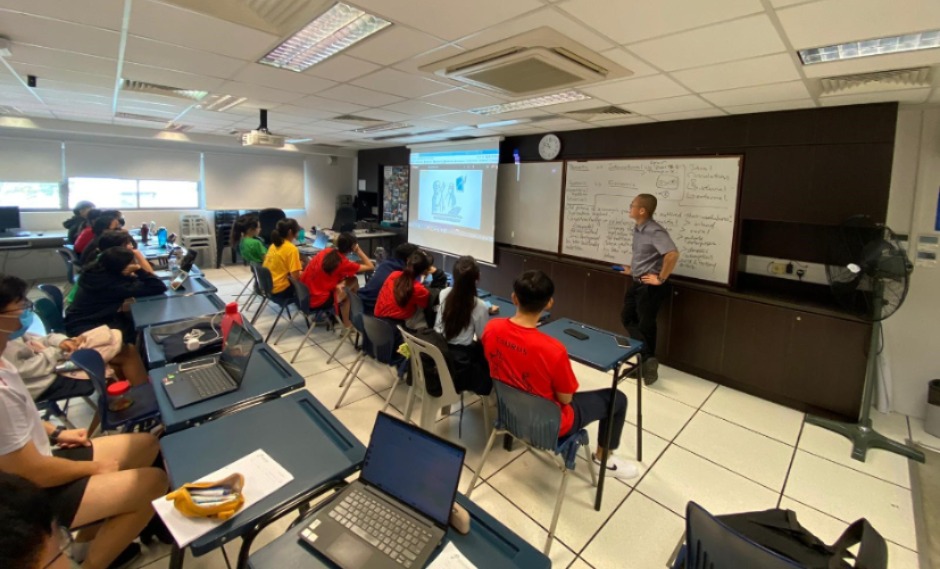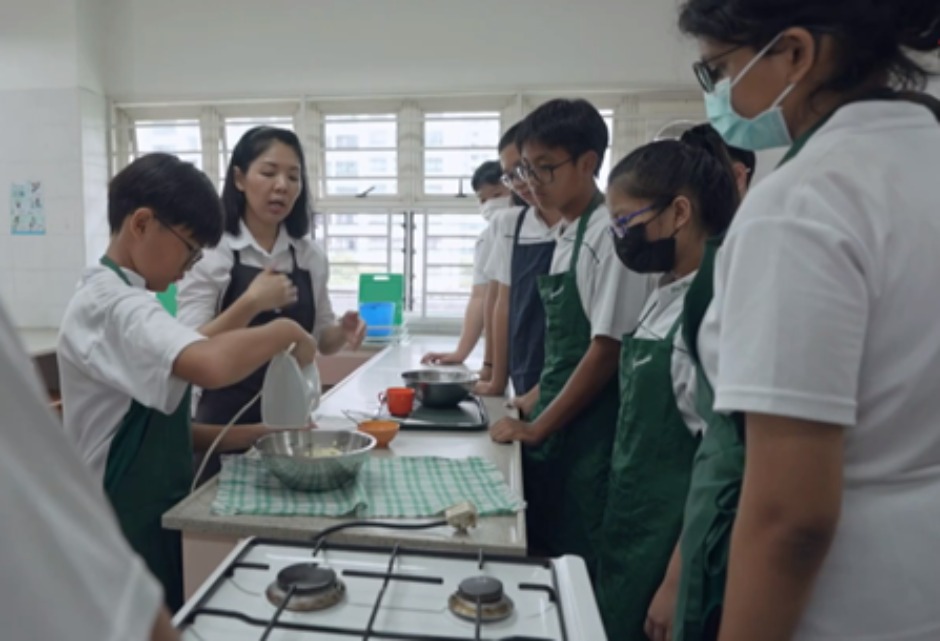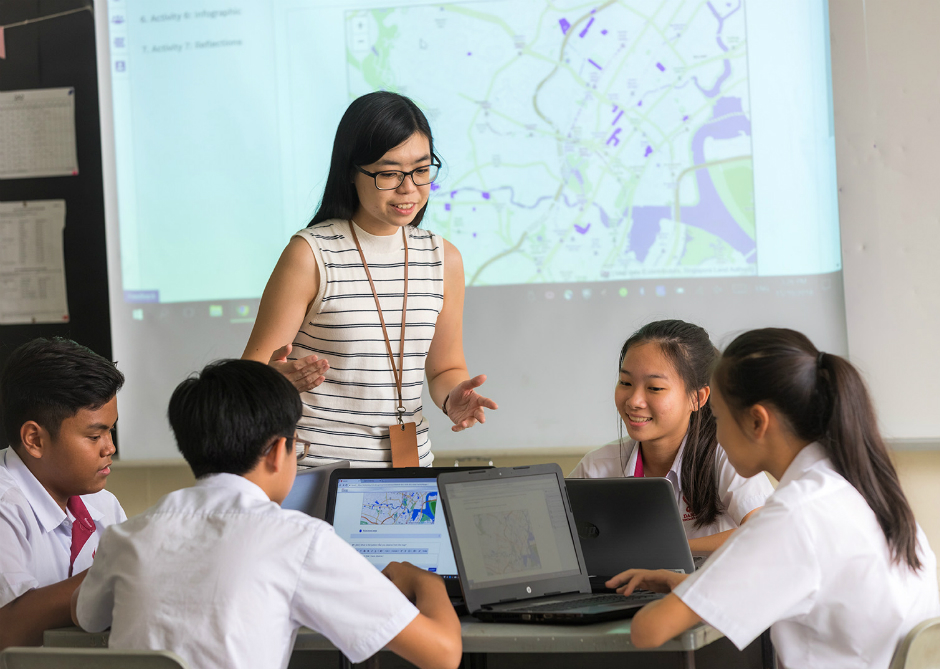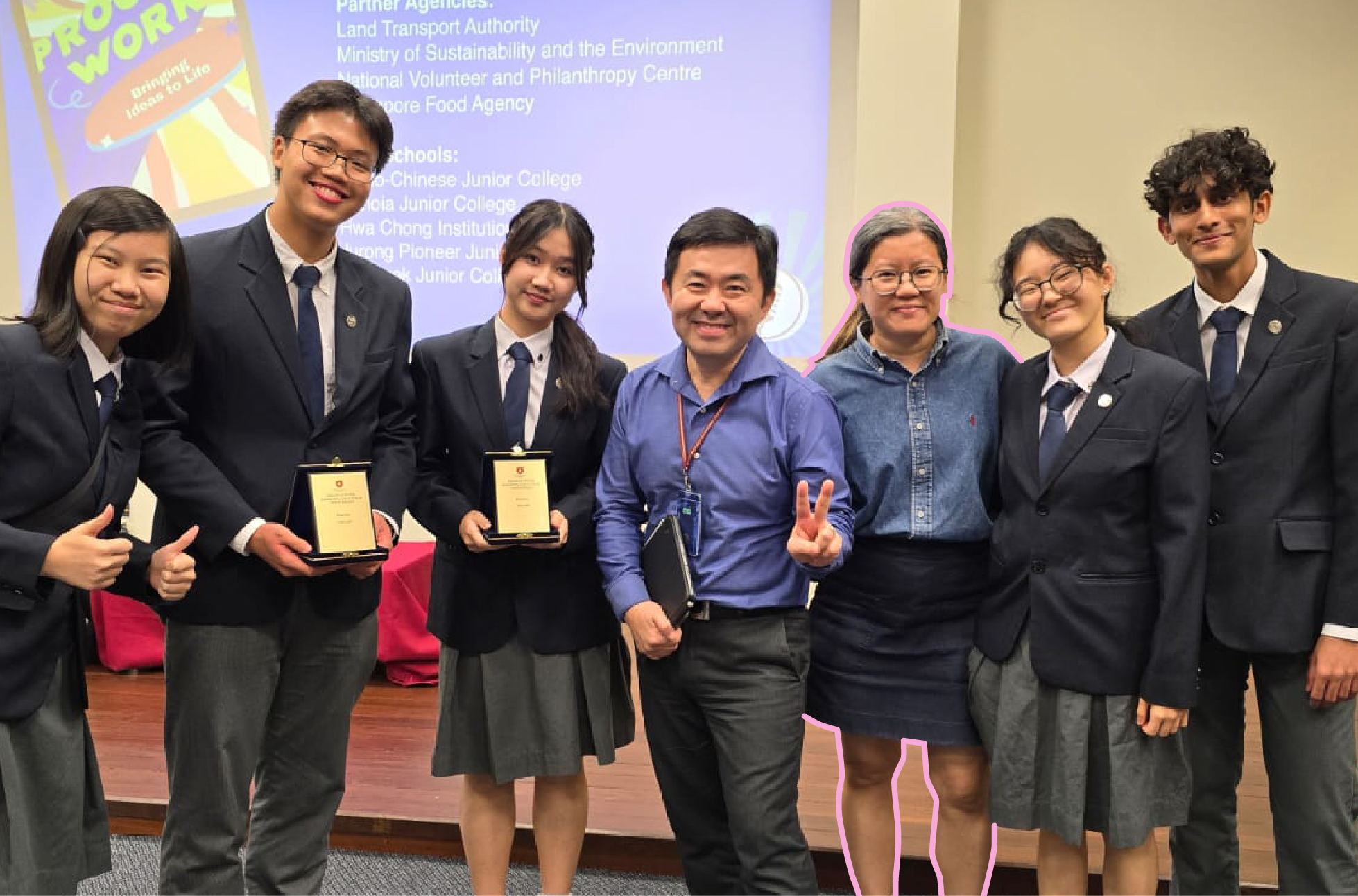I’ve reclaimed time for richer classroom discussions”
Mr Lim Wui Lester, Lead Teacher/History, Jurong Pioneer Junior College
“ChatGPT is highly versatile; it can function as an intelligent search engine, information generator, and organiser. It can therefore perform many menial tasks for both teachers and students, freeing up valuable classroom time for educators to focus on developing higher-order skills such as information literacy, sound research methodology, and persuasive communication.
“By leveraging the power of generative AI tools like ChatGPT, China Studies in English lessons have become more engaging and discussion-based. Instead of receiving information on the challenges confronting the development of Chinese economy from given notes and explanations, students can pose the question to ChatGPT and receive an overview of the topic. This process leads to evidence-based inquiry learning, where students can evaluate the validity of the information and engage in student-centred discussions.
“During the second half of the lesson, students critique each other’s findings, and address the essential question posed. An example of an essential question would be, ‘Is imbalanced development the greatest inhibition to China’s economic sustainability?’ Since ChatGPT is an algorithmic programme that mixes and matches information, it cannot perform humanoid thinking activities like synthesis, evaluation, and analysis. Hence, the lesson becomes discussion-based, mainly driven by the students’ intellectual curiosity and interest in the subject.”
“It encourages my students to think beyond what is covered in class”
Ms Huang Kexin, Head of Department/Science, Fuhua Secondary School
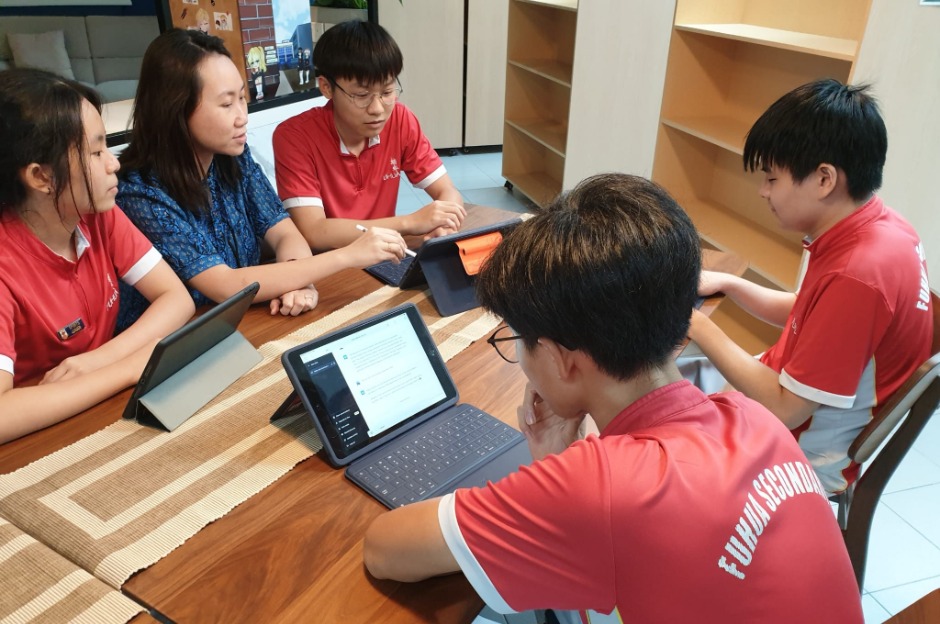
“By analysing my students’ questions, responses, and follow-ups to ChatGPT’s answers, I gained insight into their learning gaps and interests.
“It also encourages them to think beyond what we cover in class. During a static electricity lesson, my students asked ChatGPT why like charges repel and unlike charges attract. Others were curious about how charges move in conductors and insulators. One student even asked ChatGPT to answer in rhyme! The answers provided by ChatGPT prompted further discussion on the choice of related technical language, the accuracy of answers, and the possibility of using more precise scientific terms while still being literally appealing.
“To prevent cheating, students must understand the purpose of homework. Homework aims to allow students to reflect, deepen and internalise their understanding of the content taught. To this end, I provide students with personalised feedback and embed metacognitive elements in their assignments to help them appreciate the value of independent completion. When students appreciate the value of homework in their learning process, they are less likely to cheat.
“My debating team put it to the test as a ‘worthy opponent’”
Mrs Juliana Ng, Level Head/English, Edgefield Primary School
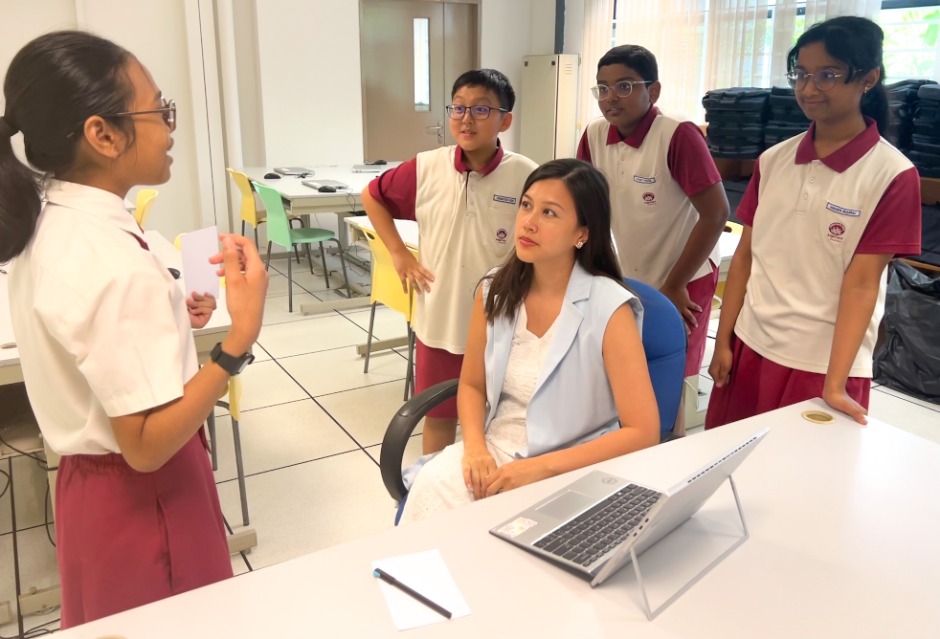
“In a debate, students need to be able to think on their feet and respond effectively. Debaters need to be able to quickly analyse the information presented to them, identify the key points and develop a rebuttal. As ChatGPT can generate responses in real time, I used it to simulate a debate during a practice session.
“The debaters were amazed at how quickly ChatGPT was able to respond and generate logical counter-arguments. However, some debaters pointed out flawed or not entirely relevant counter-arguments. This proved to be a valuable learning point for the students, with them being made aware of the limitations of such generative AI tools.
“Overall, the experience of using ChatGPT during our practice round was novel and thought-provoking, generating great interest. It helped debaters to better anticipate and prepare rebuttals to opposing viewpoints, as well as refine their arguments before the actual debate.”
“It inspires action and eliminates inertia in my students”
Mr Keith Ang, Art teacher, School of the Arts Singapore (SOTA)
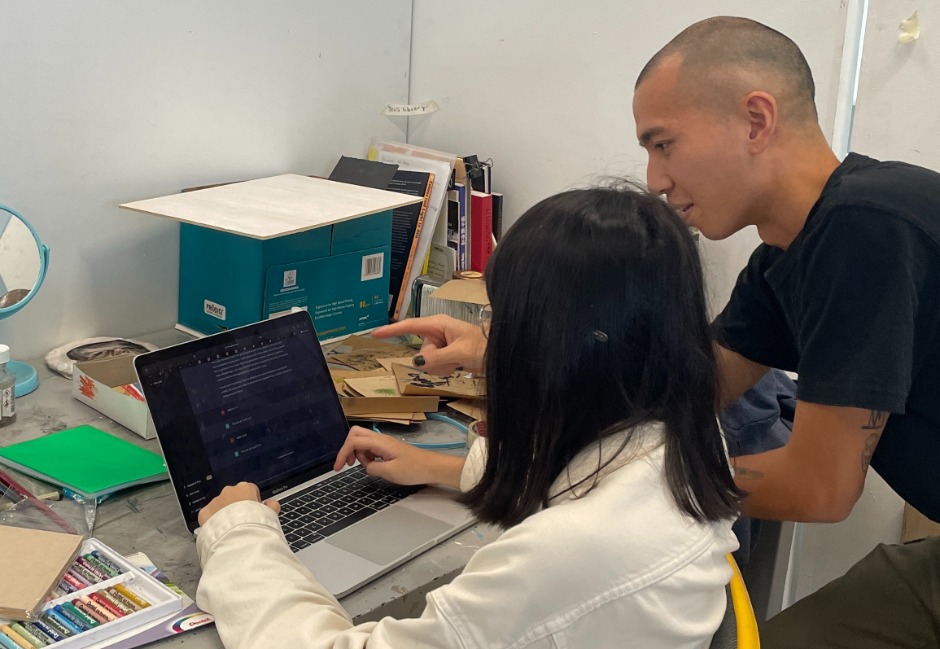
“There are always going to be concerns about the abuse of technology. I am not too concerned by it. As technology is here to stay, we should try to embrace these tools as much as we can. It is important to have open and honest conversations about the use of AI with students and teach them to harness it as a powerful aid and learning tool.
“I am confident that once the use of AI starts becoming a norm, it will change our education landscape and we will learn to incorporate it in a way that would not allow for easy abuse of the tool. If not, there is a potential for our current curriculums and education models to become obsolete. When knowledge is so readily available, how do we pivot the way we teach and learn to keep up with the times and prepare for the future? If there is too much resistance to change or to embrace such tools, it could make the classroom a frustrating place for both teachers and students.
“In my Professional Practice class, students learn necessary skills to survive as a creative in the industry, from using different design software to building their own portfolio websites. We’re currently working on a self-branding project, where students use ChatGPT to help with crafting their artist biographies and brand philosophies. Writing isn’t necessarily everyone’s strong suit, hence using the AI writing tool can help students to present their ideas in a very coherent and professional manner.
“I think generative AI tools can help make teaching and learning a lot more accessible and improve productivity. When thinking up lesson plans or when thinking of how to write an analysis for an artwork, we may face inertia. Using language-based AI tools can help overcome that easily as it can give users a starting point with simple prompts keyed in. Image-based AI tools can also help generate composition ideas for artwork.”
“It cannot replace content mastery and critical thinking”
Mr Kenneth Koh, Head of Department/Humanities, Catholic High School
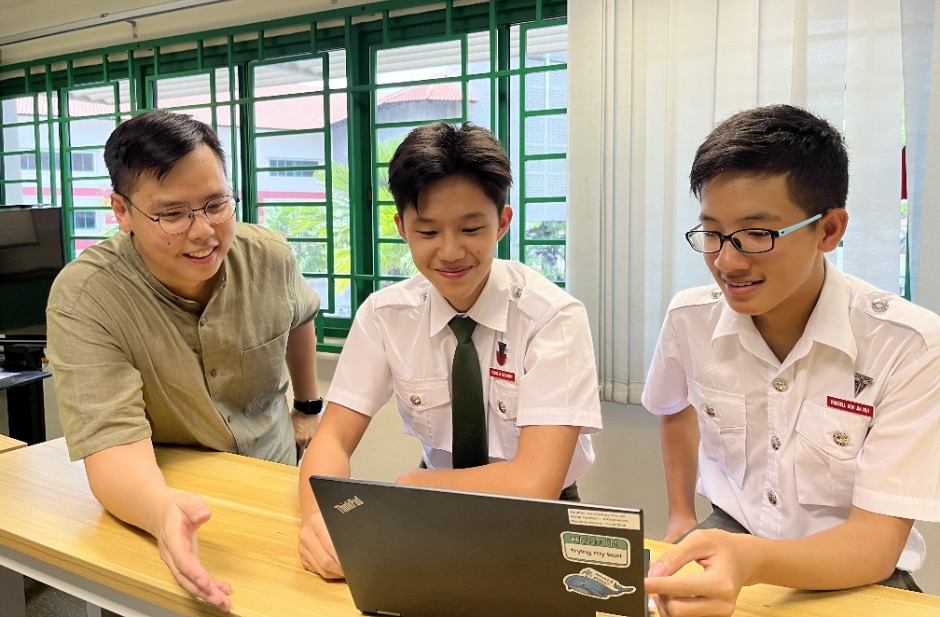
“Although generative AI tools can add value to our teaching and learning experiences, they are not foolproof. ChatGPT can fail to convey nuance effectively. It may also provide oversimplified narratives, inaccuracies, and biases. Yet, rather than consider ChatGPT as a foe, we should have open conversations about its limitations and possibilities with our students.
“In one History lesson, we used ChatGPT to investigate the claim that rising militarism was a key reason for the outbreak of World War II. To investigate this claim, we used ChatGPT to provide an explanation of reasons on both sides of the argument. While ChatGPT did a great job at categorising factors and providing contrasting views, my students and I quickly realised that these broad points lacked substantiation with historical evidence. The students then discussed what needed to be added into ChatGPT’s responses to make a more convincing case.
“As the investigation required students to provide an evaluation at the end, they also realised another of ChatGPT’s shortcomings – it was not able to provide a personal judgement, almost always concluding the discussion as ‘complex and multifaceted’. This experience taught them that while such tools can accelerate learning, they cannot replace the need for content mastery, critical thinking skills and the ability to construct one’s personal voice. The only way to meaningfully use them is to want to be better than them.”
“We enhance learning by evaluating its responses”
Mrs Lynn Tan, Lead Teacher/English, Pasir Ris Secondary School

“Based on my initial exploration, the essays generated by ChatGPT have been incomplete. There are missing details, and this presents the potential to foster my students’ ability to ask thoughtful questions. As they ask questions, their thinking and curiosity about the issue or topic are piqued, leading to a deeper understanding and engagement in the learning process.
“However, before my students can start critiquing essays using ChatGPT, they need to know the ins and outs of expository writing. In the expository genre, students are required to present their opinions on a specific topic with supporting elaboration and evidence to convince their readers. At the same time, they need to avoid making generalised claims or providing vague information.
“My Secondary 3 students are currently mastering their expository writing and critical thinking skills, which are essential for them to become more discerning recipients of information. Once they are familiar with the demands of the essay, they will be better able to evaluate the points presented by ChatGPT and prompt for missing details through questioning. Hence, while I recognise the potential for ChatGPT, I have yet to integrate it into my lessons.”
“It transforms students into active learners”
Ms Khairiah Bte Hairoman, Head of Department/Humanities, Peirce Secondary School
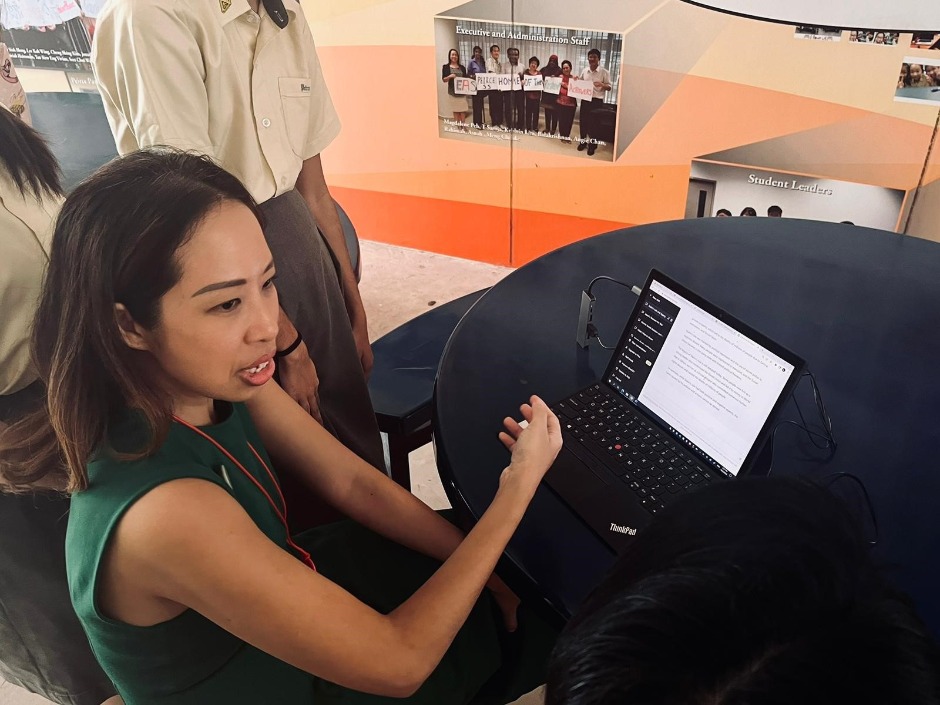
“When it comes to subjects like History and Social Studies where perspective-taking is important, ChatGPT can offer an alternate point of view for our students to consider. However, because ChatGPT provides answers almost immediately, this might hinder a student’s thinking process.
Furthermore, the beauty of the Languages and the Humanities is the creativity and individuality of one’s writing. If students become too dependent on ChatGPT to churn out their answers, they will not be able to develop this skill.
With these AI tools, my responsibility shifts further from providing students with information to nurturing their capacity to work independently and cooperatively. In the process, they learn the skills that I deem valuable, such as recognising diverse perspectives, teamwork, communication, empathy, and sensitivity — all these are what we now have more time to focus on.”
“Writing evocative prompts sharpens my students’ art vocabulary”
Ms Heather Teo, Subject Head/Art, CHIJ Katong Convent

“As an Art teacher, AI-generated art feels, intuitively, like a threat to the study of the subject. Yet, to not ride on the crest of this wave of innovation seems like a wasted opportunity; instead of fearing what AI could do (or undo), I decided to try and see what it could do for me and my students in the classroom.
“In a Secondary 4N(A) lesson on the artist Frida Kahlo, I tasked my students to craft prompts that would generate an artwork on Midjourney about Kahlo, and in Kahlo’s distinctive art style, without including Kahlo’s name. This set of images are an example of the AI-generated artworks from the prompts – the resemblance to Kahlo and imitation of her style is quite incredible. The activity taught them how to improve their descriptive skills and sharpen their use of art vocabulary.
“The prompt used to produce these images was: ‘/imagine portrait, contrast, Mexican culture, flower, dress, unibrow, juxtaposition, female power, another point of view’. The interesting thing about Midjourney is that if you input the exact same prompt a second time, you will get a different result.
“I am still new to the vast potential that generative AI tools have to offer, but I am excited to see how and where AI can be utilised in staging creative and engaging lessons for my students.”
